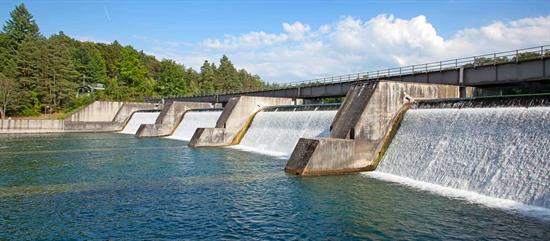In the News
House subcommittee clears plans to unclog hydropower pipeline
Washington,
October 27, 2017
Both measures look to cut through the thicket of regulations that has brought what once was at least incremental growth of U.S. hydropower capacity to a virtual standstill.
With a 14-minute Oct. 26 markup session, the U.S. House Subcommittee on Energy sent a pair of deceptively simple bills to the full Energy and Commerce Committee, each of which could (should they ultimately become law) help to boost the U.S. hydropower sector. Both measures look to cut through the thicket of regulations that has brought what once was at least incremental growth of U.S. hydropower capacity to a virtual standstill. H.R. 2872—sponsored by Rep. Larry Bucshon, R-Ind.—would give the Federal Energy Regulatory Commission discretion to give nonpowered dams that want to develop hydropower exemptions from various licensing requirements. Meanwhile, H.R. 2880—sponsored by Morgan Griffith, R-Va.—would limit FERC’s authority, when to comes to closed-loop pumped storage hydropower, to impose only those licensing conditions needed for public safety, to protect fish and wildlife and that are reasonable and economically feasible. Speaking at Thursday’s markup, Energy Subcommittee Chairman Fred Upton, R-Mich., called new turbines on existing hydro dams “a win-win. These projects cause minimal environmental impact, new investment, more jobs and added benefits to the grid.” A 2014 U.S. Energy Department report found that streamlining rules to more easily permit the installation of hydro turbines at existing nonpowered dams could add more than 50 gigawatts of carbon-free power by 2030. This is equal to roughly 50 additional nuclear facilities, but at a fraction of the cost. It would boost total U.S. electricity capacity by 3.5 percent, all without any increase in emissions. And it would roughly match the amount of wind energy capacity built since 2010, but without the tens of billions of dollars of taxpayer subsidies. R Street looked at the topic in an August 2017 white paper that recommended unclogging the regulatory bottlenecks that in a licensing process that can take between seven and 10 years and sometimes makes the cost of the upgrades too expensive to justify. The amount of red tape to build or relicense a hydropower project reflects a slow accumulation of bureaucratic obstructions, combined with decades of congressional inaction. These bills represent a hopeful step toward more inexpensive clean energy being produced in the United States. |

